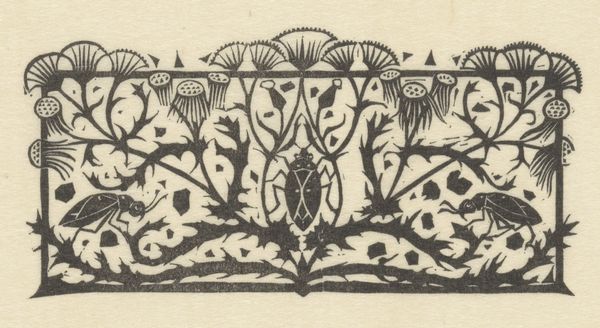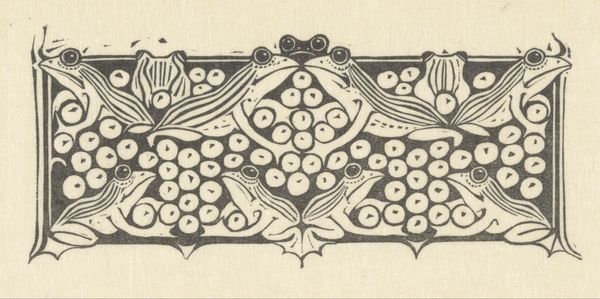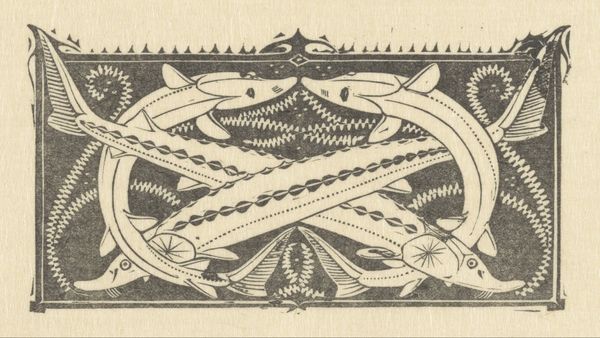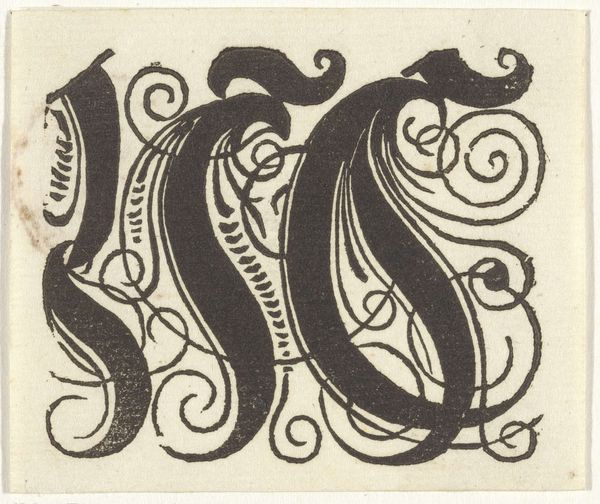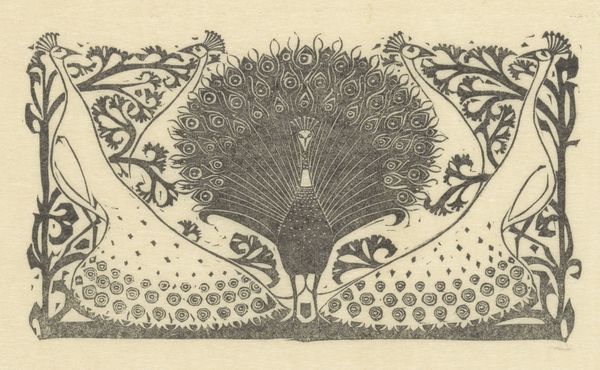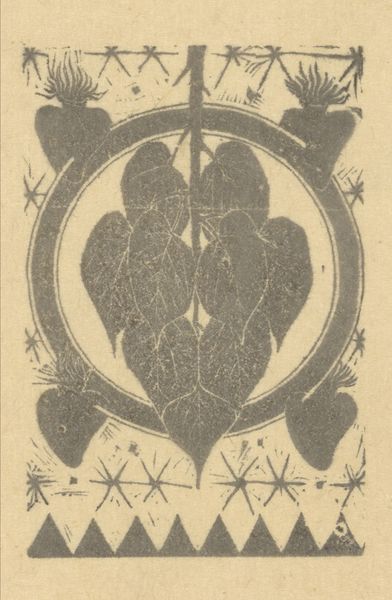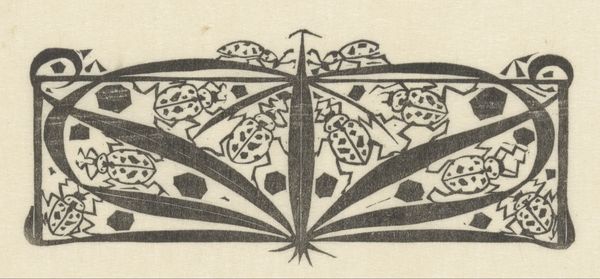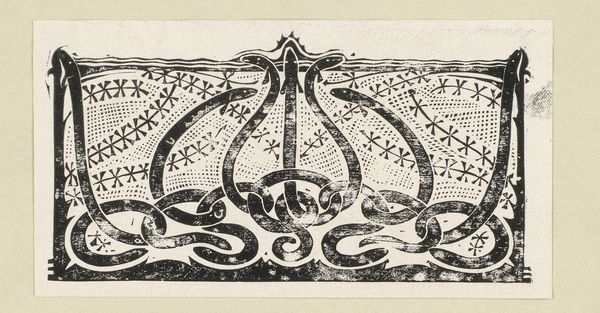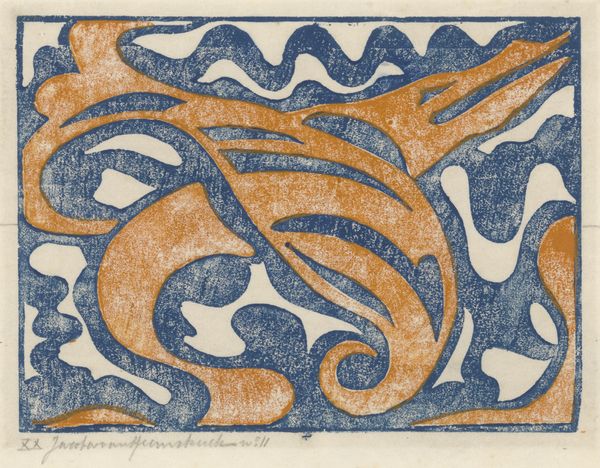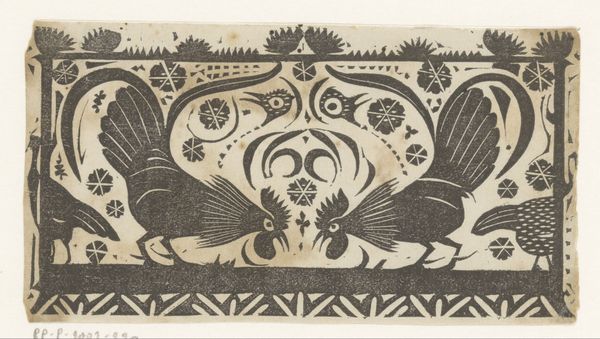
drawing, ink
drawing
art-nouveau
ink
geometric
line
Dimensions: height 60 mm, width 117 mm
Copyright: Rijks Museum: Open Domain
Editor: So this ink drawing is titled "Titelhoofd met palingen" which translates to "Title page with eels." It's by Gerrit Willem Dijsselhof, made sometime between 1893 and 1927, and currently residing here at the Rijksmuseum. It’s fascinating how this ornate, flowing Art Nouveau design uses eels as a central motif. It feels so stylized, almost like a textile pattern. What stands out to you when you look at this work? Curator: For me, the process is really key here. Think about the labor involved in creating these intricate lineworks. Each stroke of ink represents a conscious decision, a physical action. This wasn’t mass-produced; it’s the product of painstaking handcraft. Notice how the eel forms intertwine, almost like rope. Editor: Right, there's definitely a sense of meticulousness. So, considering this, how does the material contribute to the overall meaning? Curator: Ink itself, as a readily available, relatively inexpensive medium, challenges traditional hierarchies in art. It bridges the gap between high art and design, particularly book design, as you can imagine. The repetitive patterns and geometric shapes were, likely, destined for mass reproduction on a title page. Editor: I see. So it's not just about the image, but the artwork's intended function within the broader culture of printed materials at the time? Curator: Exactly. It's also worth noting the cultural context of Art Nouveau, with its emphasis on natural forms and decorative arts. Eels, perhaps not the most conventional subject matter, became a vehicle to elevate craft. Where were those materials coming from? What does this tell us about design production and availability? Editor: So, through a Materialist lens, we move beyond just appreciating the aesthetics and dive into the historical conditions and labour processes that gave rise to its creation? Curator: Precisely. It compels us to think about artistic intent and, moreover, the act of creation. Editor: This gives me a whole new appreciation for Art Nouveau's complex relationship with industry and design.
Comments
No comments
Be the first to comment and join the conversation on the ultimate creative platform.

